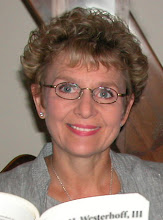
There is an old Hindustan saying that "in India guests are treated as gods," and I can vouch for its truth. The founder of QA Infotech and my guide in the north, Mukesh Sharma is a wonderful host. He picked me up at airport yesterday and took me for dinner at a fancy Indian restaurant. I was showered with fresh flowers and a bottle of red wine, and then Mukesh gave me his mobile phone, so I could stay in touch without paying international calling charges on my Blackberry.
This morning, he and his colleagues (cousin Anshuman, employees Kapil and Giri) picked me up at 6:30 am for the 4-hour drive into Agra to see the Taj Mahal. Everywhere he goes Mukesh has family and friends. Shopkeepers greet him with open arms and he still has many connections in Agara from his school days in that city. We were treated royally wherever we went. A tip from his cousin helped us plan out our day--better to go first to the Agara Fort, the seat of Hindustan government for hundreds of years, and to end our day at the Taj Mahal, when the lines would be smaller.

Here you see Mukesh and our young guide heading into the Agara Fort (1565–74) . Built by the Muslim emporer Akbar in the Mughal style of Islamic architecture, this great fortress is built of red sandstone and is surrounded by a deep moat that was once filled with snakes and alligators, as well as a drawbridge that hinges closed to deny entrance to enemies.
Inside is a royal compound, complete with a women's palace for the emporer's wives. They were not allowed outside of the palace and were virtually prisioners in their own homes. Not only did each of the three wives have to share the emporer with each other, but also with his harem of girlfriends. The Muslim religion is extremely oppressive to women. But the architecture and vistas of the fort are breathtaking and the views from the upper stories afford a glimpse of the luminous TajMahal shimmering in the distance.
Seeing the TajMahal up close was a once-in-a-lifetime experience. The craftsmanship is superb--completed by hand over a span of 22 years and featuring carved panels of shimmering white Indian marble, inlaid with intricate lapidary designs studded with semi-precious stones.
Built by the Mughal emporer Shah Jahan in memory of his favorite wife, Mumtaz Mahal, this palatial monument is actually a mausoleum that houses the tombs of the emporer and his queen.
After a tour of the Taj and its gardens, we stopped for a vegetarian lunch, with warm garlic nann, sliced cucumbers and tomatoes drizzled with fresh lime, and three steaming bowls of mixed vegetables, including the best tofu I have ever eaten in my life. Though it took another 4+ hours to get home, it was worth the drive. There is nothing to compare with seeing India through the eyes of its Indian residents.
 The first impression is chaos--people everywhere, a storm of vehicles and foot traffic moving into and out of the roadways without a traffic signal in sight. The lack of stoplights, coupled with the Indian practice of driving on the left hand side of the road, makes driving risky, which helps explain why so many Indians have drivers. But the traffic moves and people go with the flow.
The first impression is chaos--people everywhere, a storm of vehicles and foot traffic moving into and out of the roadways without a traffic signal in sight. The lack of stoplights, coupled with the Indian practice of driving on the left hand side of the road, makes driving risky, which helps explain why so many Indians have drivers. But the traffic moves and people go with the flow. The country is a service economy and Indians have a long history of being eager to please. That's one of the reasons it was so easy for the British to colonize the area during the mid 1800's. Now India has its freedom, but it still provides service via call centers and IT shops.
The country is a service economy and Indians have a long history of being eager to please. That's one of the reasons it was so easy for the British to colonize the area during the mid 1800's. Now India has its freedom, but it still provides service via call centers and IT shops. 





 Here you see Mukesh and our young guide heading into the Agara Fort (1565–74) . Built by the Muslim emporer Akbar in the Mughal style of Islamic architecture, this great fortress is built of red sandstone and is surrounded by a deep moat that was once filled with snakes and alligators, as well as a drawbridge that hinges closed to deny entrance to enemies.
Here you see Mukesh and our young guide heading into the Agara Fort (1565–74) . Built by the Muslim emporer Akbar in the Mughal style of Islamic architecture, this great fortress is built of red sandstone and is surrounded by a deep moat that was once filled with snakes and alligators, as well as a drawbridge that hinges closed to deny entrance to enemies. 

